Introduction:
Soil is a very important part of the design and building of any structure. Since the soil is in direct contact with the structure, it acts as a way to transfer loads. Any analysis of forces acting on the structure must consider how stresses are spread through the soil since the structure’s stability depends on the soil’s properties. At the feasibility stage, it is important to conduct a geotechnical study of the site before the design begins. It is a key design input that helps to understand the subsoil on which the structure will stand.
What is Soil Stabilization?
Soil stabilization is adding and mixing other materials into the soil to change its properties. Soil stabilization is a way to improve the soil’s shear strength parameters, which increases the soil’s ability to support the weight. It is usually needed when the soil under a building’s foundation is not strong enough to hold up the structure. Soil stabilization is a way to stop structures from sinking into the ground. It does this by making the soil less porous and easy to pack down. It also makes the soil more resistant to shear.
The methods for stabilizing soil involve stabilizing agents in weak soils to improve its geotechnical properties like its ability to be compressed, strength, ability to let water through, and ability to last.
Importance of Soil Stabilization:
A solid base is essential for the longevity and integrity of any structure. In the end, the soil is where the foundation must rest, shifting all the weight to the ground. Differential settlement occurs if a weak soil base is chosen for construction, as the soil gradually becomes more compacted and consolidated over time. Also, it might cause the structure to crack, which can have disastrous results. Soil stabilization is an option worth considering to prevent these issues in the future on fragile ground.
Methods of Soil Stabilization:
1. Mechanical Stabilization:
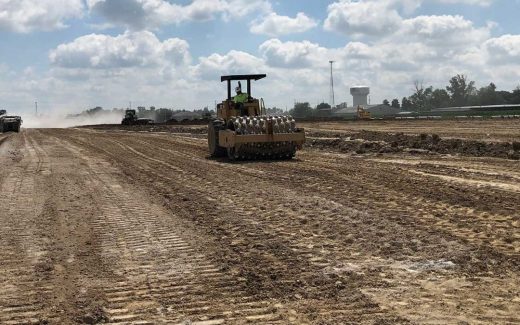
Fig 1: Mechanical Stabilization of Soil
Courtesy: mintekresources.com
It changes the soil’s gradation by packing it with mechanical energy to make it more stable. For this method, equipment like rollers, vibrators, and earth rammers are often used. The trapped air and pores are released when the soil compacts and becomes less porous. When you mix two kinds of soil to make composite soil, you can sometimes get the properties you want. Filling and backfilling the soil and reinforcing the soil are two other ways to make sloped areas more stable.
2. Chemical Stabilization:
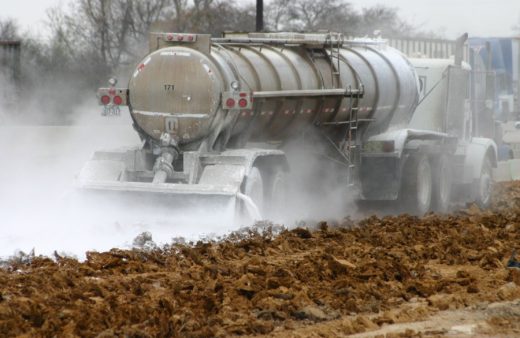
Fig 2: Chemical Stabilization of Soil
Courtesy: structuralguide.com
Chemical stabilization of soil is a way to change the physical structure around and inside clay particles so that the soil needs less water to compensate for the static imbalance. Calcium chloride is usually hygroscopic and deliquescent. It is a water-retaining ingredient in soil bases and surfaces that have been mechanically stabilized. This process lowers the vapor pressure, raises the surface tension, and slows the rate at which water evaporates.
It also reduces the temperature at which water freezes, which helps stop frost heave. It lowers the electric double layer and reduces the amount of water that fine-grained soils can absorb. Calcium chloride usually makes the soil stick together and easier to pack down. When calcium chloride is used often, chemicals may be lost through leaching. If you want to use salt effectively, the relative humidity of the air should be above 30%. Calcium chloride can also be used to do this, but sodium chloride can also be used for the same purpose.
3. Cement Stabilization Method:
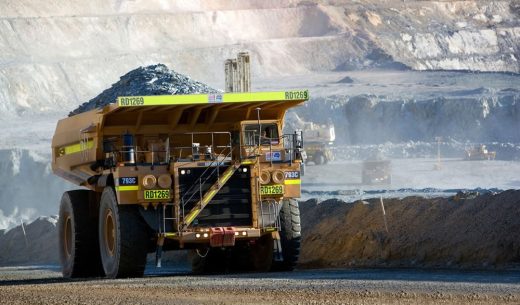
Fig 3: Cement Stabilization of Soil
Courtesy: globalroadtechnology.com
The process of stabilizing cement can be done by mixing. Mixing portland cement and pulverized soil with water and then packing the mixture together makes a strong material. The material is made by mixing soil and cement, known as “soil-cement.” As the cement dries out and gets stronger, the material gets hard and can be used to build strong structures.
4. Lime Stabilization:
Lime soil is commonly used as a binding agent or to improve the texture of clay soil. As the plasticity index drops and the soil becomes more brittle and easy to pulverize, its attraction to water decreases, making it ideal for use in construction. The binding properties of lime are also contributed. Lime’s pozzolanic action strengthens fine-grained soil. For stabilizing purposes, all of these adjustments are for the best.
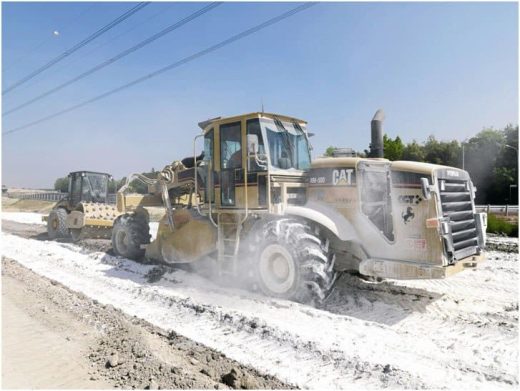
Fig 4: Lime Stabilization of Soil
Courtesy: civilengineeringforum.com
As a sub-base course, soil lime works well for light traffic and high-type pavements. However, this technique cannot be utilized as a finishing coat due to its low resistance to wear and damage. It works great in the tropics but freezes too quickly for optimal use elsewhere.
5. Fly Ash Stabilization:
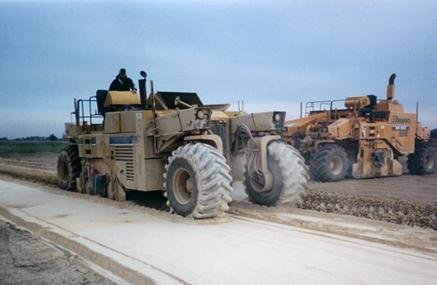
Fig 5: Fly Ash Stabilization of Soil
Courtesy: researchgate.net
These days, more and more people are opting to use fly ash stabilization because it is so readily available. Stabilization with fly ash is quick, easy, and doesn’t cost very much. As an engineering material with a long and reliable history in geotechnical applications, fly ash has been widely used for decades.
Those who use coal to generate electricity produce fly ash as a by-product. When compared to lime and cement, fly ash has very limited cementation characteristics. Because these binders don’t have enough power, we refer to them as “secondary.” However, when combined with primary binders, it can undergo a chemical reaction to form a cementation compound that helps increase the strength of soft soil.
6. Rice Husk Ash Stabilization:
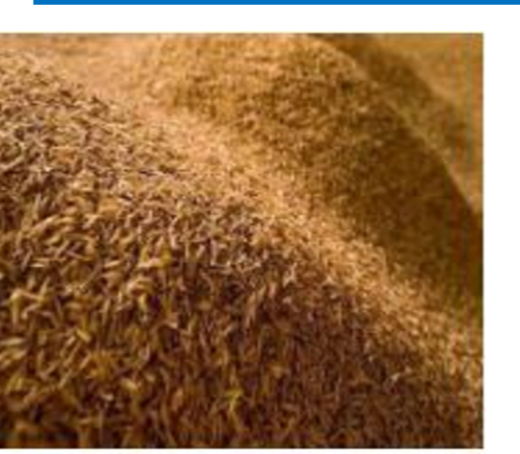
Fig 6: Rice Husk Ash Stabilization of Soil
Courtesy semanticscholar.org
Rice husk ash is a suitable material that, at first glance, appears to be an inert substance, with the silica in the crystalline form suggested by the structure of the particles; yet, it may react with lime to generate calcium silicates. Like fly ash, which is more finely divided, risk husk has a high reactive potential. If you want to stabilize your soil, try using rice husk ash.
7. Thermal Stabilization:
When temperatures rise, soil qualities gradually improve. You can use both heat and cold for thermal stability. The soil’s water content drops as the temperature rises. Consequently, the soil’s strength increases as repulsing electrical forces between the clay particles diminish. Assuming temperatures rise over 100 degrees Celsius. The soil becomes even stronger when the absorbed water drains away. The soil begins to heat at temperatures between 400 and 600 degrees Celsius. It causes the soil to undergo irreversible alterations, becoming inflexible and unable to expand and contract. When the clay dried, it was wanted for aggregates.
Clayey soils lose some of their strength with chilling because of the increased interparticle repulsion. In contrast, if the temperature drops below freezing, the clean water freezes, and the soil become more stable. Cementing ice formed under specific conditions.
8. Bituminous Stabilization:
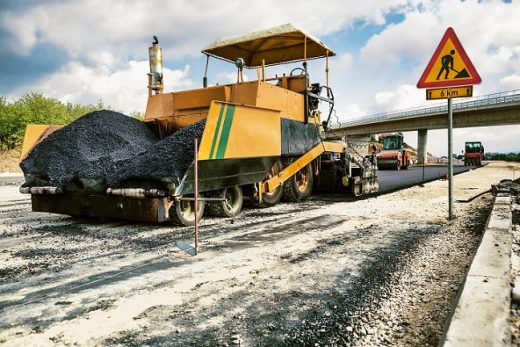
Fig 7: Bituminous Stabilization of Soil
Courtesy globecore.com
A bituminous material is blended with soil or aggregate to form a stable base or walking surface. Bituminous materials in the soil make it more stable, hold more weight, and are resistant to the effects of water. Most bituminous materials used to build roads are asphalts and tars. When bituminous materials are added to soil, the soil becomes more stable and holds less water.
9. Electrical Stabilization:
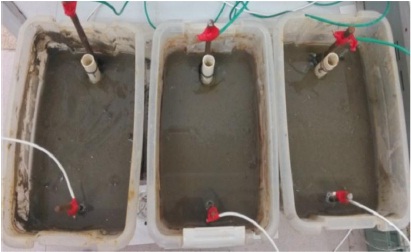
Fig 8: Electrical Stabilization of Soil
Courtesy: opencivilengineeringjournal.com
Played soils are electrically stabilized through a process called electro-osmosis. Pure water moves to the negative electrode as a direct current is passed through clayed soil. Positive irons in the water attract cathodes, which is why it happens. The elimination of water significantly boosts the soil’s strength. They make cohesive soils drain more effectively. Additionally, the soil’s qualities are enhanced.
10. Soil Stabilization by Geotextile and Fabrics:
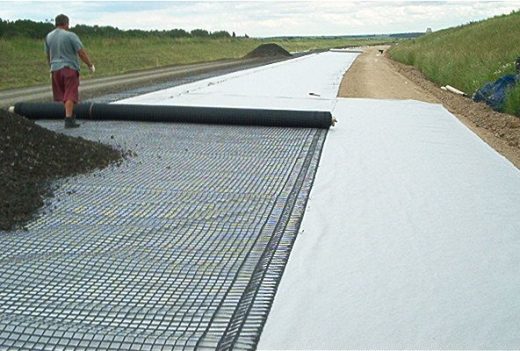
Fig 9: Electrical Stabilization of Soil
Courtesy: civiconcept.com
Geotextile is made of synthetic materials like polyethylene, polyester, nylon, and polyvinyl chloride. They are porous fabrics. Geotextile can be woven, not woven, or in the shape of a grid. Geotextile can hold up to a lot of weight. When it is properly buried in the ground, it adds to its stability. It is used to build roads without pavement on soft soils. Putting metal strips into the ground to stabilize it and providing an anchor or tie back to hold back a facing skin element.
Factors Affecting the Strength of Stabilized Soil:
i) Organic Matter:
When there is a lot of organic matter, it reacts with the water and lowers the pH value. It will slow down the soil’s ability to absorb water and make it less stable.
ii) Compaction:
Soil carrying capacity can be increased with proper compaction, and compaction is also crucial in cement and lime stabilization.
iii) Occurrence of Sulfates and Sulphide:
It takes longer to stabilize the soil when Sulphates and Sulphides are in the soil.
iv) Moisture Content:
For the hydration process and effective compaction, the moisture content is crucial. The environment’s moisture contributes to 20% of the weight of hydrated cement and 32% of the weight of quick lime.
v) Temperature:
When the temperature changes, the pozzolanic reaction slow down or speeds up. Weak stabilized soil results from the sluggish pozzolanic reaction caused by low temperatures.
Conclusion:
Soil stabilization enhances the ground’s carrying capacity by changing the soil’s technical qualities. Soil stabilization is crucial since the soil is the only thing that supports everything (dead, live, seismic, wind). If the foundation is secure, then the building can be considered secure. Though enhancing soil quality benefits, soil stabilization can be expensive. Rather than risk the building’s stability and worry about its eventual collapse, it’s better to take the necessary precautions now than later.
References:
1. Happhoadmin7. “Soil Stabilization?: Importance and Various Methods – Happho.” Happho, 13 May 2017, happho.com/soil-stabilization-importance-methods.
2. Prasad. “Soil Stabilization Chemical and Mechanical Methods – Structural Guide.” Structural Guide, 10 Jan. 2022, www.structuralguide.com/soil-stabilization.
3. Civil, Tutorial Tips. “What Is Soil Stabilization? Types of Soil Stabilizations? – for Construction.” Tutorials Tips, 4 Oct. 2022, tutorialstipscivil.com/material/loose-soil-stabilization-for-construction.
4. Sitework, Eastcoast. “What Is Soil Stabilization in Road Construction – Building Site Preparation, Site Work Construction and Drainage Solutions?” Building Site Preparation, Site Work Construction & Drainage
Solutions, 11 Aug. 2021, eastcoastsitework.com/what-is-soil-stabilization-in-road-construction.
5. CementConcrete. “Soil Stabilization Methods: New Research, Laboratory Tests and Suggestion – Cement Concrete.” Cement Concrete, 15 May 2019, cementconcrete.org/geotechnical/soil-improvement/soil-stabilization-methods-laboratory-tests/1225.
6. Kamble, Anand. “What Do You Mean by Soil Stabilization 2021?” A To Z Building, 16 Aug. 2021, atozbuilding.in/2021/08/what-mean-soil-stabilization-types.html.
7. Sautya, Malay. “5 Methods of Soil Stabilization – Mechanical, Chemical, Cement, Lime.” 5 Methods of Soil Stabilization – Mechanical, Chemical, Cement, Lime, 21 Aug. 2018, civilnoteppt.com/5-methods-of-soil-stabilization.
If you have a query, you can ask a question here.


